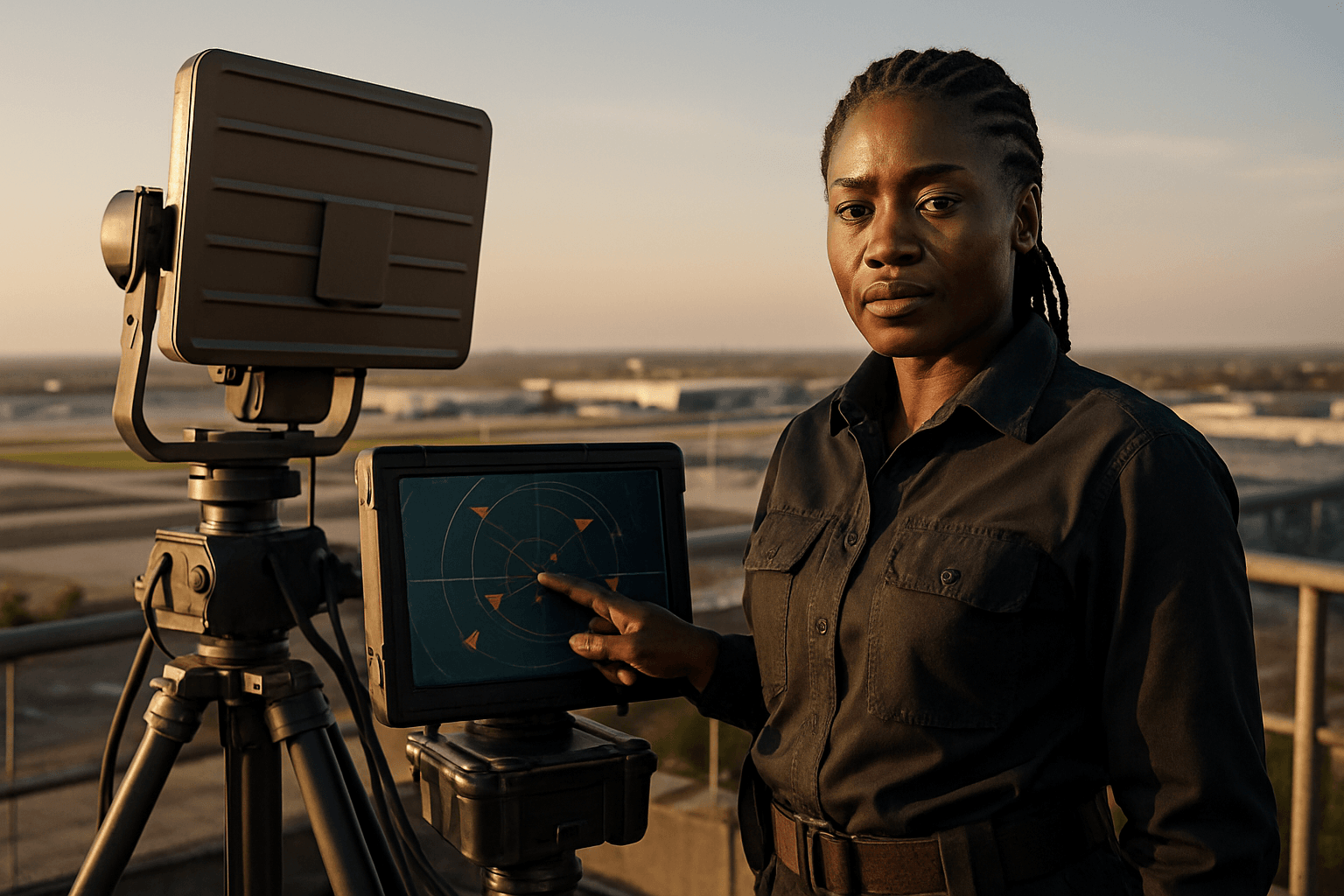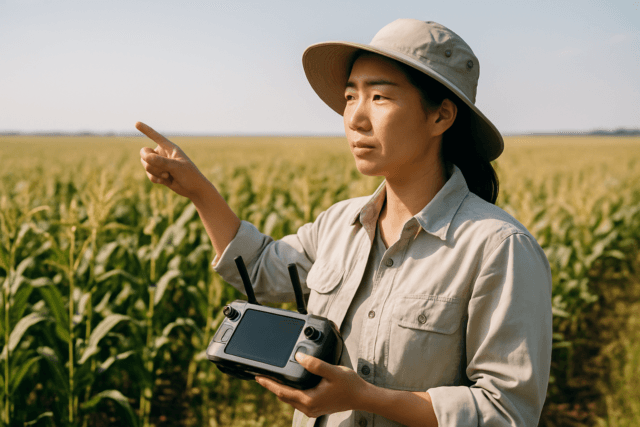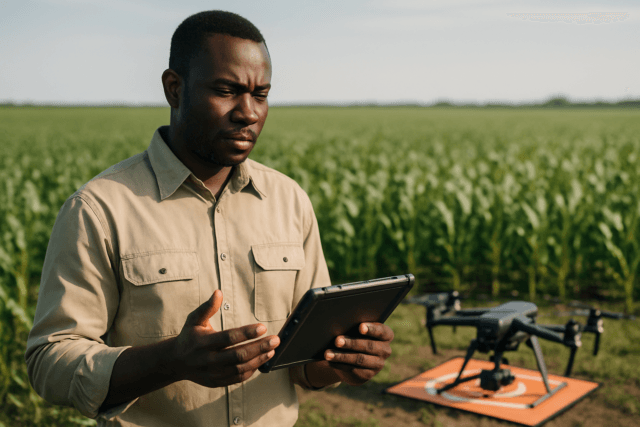The rapid proliferation of unmanned aerial vehicles (UAVs), commonly known as drones, has ushered in an era of unprecedented opportunities across various industries, from logistics to surveillance. However, this accessibility also presents significant security challenges, necessitating the urgent development and deployment of robust anti-drone systems to safeguard critical airspace and infrastructure. Unauthorized drone activities, ranging from espionage and smuggling to potential terrorist threats and disruptions at major events, highlight the growing need for effective countermeasures.
As drones become more sophisticated and autonomous, the demand for comprehensive counter-UAS (C-UAS) technology is skyrocketing, with the global anti-drone market projected to reach substantial figures in the coming years. These systems are designed to detect, track, identify, and ultimately neutralize unauthorized or hostile UAVs, ensuring airspace security and protecting sensitive areas.
The Escalating Threat of Unmanned Aerial Vehicles (UAVs)
Drones, once considered niche technological marvels, are now readily available and increasingly capable. While beneficial for various commercial and recreational purposes, their misuse poses serious threats to public safety, privacy, and national security. Instances of drones interfering with airport operations, conducting unauthorized surveillance of critical infrastructure like power plants and government buildings, and even being used for illegal activities such as smuggling, underscore the evolving threat landscape. The agility and accessibility of these devices, coupled with their potential for payload capacity and long-distance flight, make them complex security risks.
Drone Applications in Surveillance and Security
Ironically, drones themselves are also pivotal in legitimate surveillance and security operations. Equipped with high-resolution cameras, thermal imaging, LiDAR, and other advanced sensors, security drones offer unique advantages for monitoring vast or difficult-to-access areas, performing perimeter patrols, and providing real-time situational awareness for law enforcement and emergency responders. They are used for border surveillance, monitoring critical infrastructure, aiding in search and rescue missions, and managing crowds at large events. However, this dual-use nature of UAVs further complicates airspace management and necessitates sophisticated anti-drone measures to differentiate between authorized and unauthorized activities.
How Anti-Drone Systems Work: A Multi-Layered Approach
Effective anti-drone systems, often referred to as counter-UAS (C-UAS) technology, typically employ a multi-layered approach involving detection, tracking, identification, and neutralization to create a comprehensive defense against unwanted drones.
Detection Technologies for Airspace Surveillance
The first line of defense involves detecting the presence of drones. Various sensor technologies are integrated to achieve this:
- Radar-Based Detection: Specialized radar systems emit radio waves and analyze their reflections to detect and track the direction and distance of objects, including small drones, often handling multiple targets simultaneously.
- Radio Frequency (RF) Analysers: These systems monitor and analyze the radio frequency spectrum for signals emitted by drones and their operators, providing a non-invasive method of identification and even locating the pilot’s position.
- Optical Sensors (Cameras): High-resolution cameras, including visible light, infrared (IR), and thermal sensors, provide visual confirmation, track movement, and are effective day and night, especially in clear conditions.
- Acoustic Sensors (Microphones): Microphones detect the distinct sound signatures of drone propellers and motors to locate and track them, though their effectiveness can be limited in noisy environments or against quieter drones.
These detection methods often work in tandem, leveraging sensor fusion technology and AI-driven analytics to enhance accuracy, reduce false positives (e.g., from birds), and provide real-time threat detection.
Neutralization Methods: Countermeasures Against Drones
Once a drone is detected and identified as a threat, various neutralization methods can be employed to mitigate the risk, categorized broadly into non-kinetic (soft kill) and kinetic (hard kill) solutions.
Non-Kinetic Countermeasures
These methods aim to disrupt or disable a drone without physical destruction, often with lower risk of collateral damage.
- Radio Frequency (RF) Jammers: Jammers broadcast electromagnetic noise on the frequencies drones use for communication, disrupting the link between the drone and its operator and potentially forcing it to land or return to its home point.
- GPS Spoofers: These systems can trick a drone into believing it’s in a different location by altering GPS coordinates, potentially guiding it to a safe zone or causing it to land. However, they carry risks of disrupting other systems and are primarily used in military contexts.
- Cyber Takeover Systems: A newer technology, these systems passively detect drone transmissions, identify the drone’s serial number, locate the pilot, and can send a signal to hack the drone, assume control, and direct it to a safe location.
- Geofencing: Some drone manufacturers incorporate geofencing to create virtual boundaries, preventing drones from entering restricted airspace, though this relies on manufacturer compliance.
Kinetic Countermeasures
These methods involve physically stopping or destroying the drone.
- Nets and Net Guns: These physically capture and immobilize drones, either launched from handheld devices, ground-based systems, or even other interceptor drones.
- High-Energy Lasers (HELs): Directed energy weapons use high-energy lasers to disable or destroy critical components of a drone, offering precision at the speed of light. They are effective over long distances and can counter drones hardened against jamming.
- High-Power Microwave (HPM) Devices: These devices use concentrated electromagnetic energy to disrupt or disable drone electronics.
- Projectile-Based Systems: Traditional kinetic solutions, such as bullets or missiles, can be used to destroy larger drones, often integrated with radar for aiming.
Applications of Anti-Drone Systems
Anti-drone technology is crucial for protecting a wide range of sensitive locations and operations:
- Critical Infrastructure: Airports, power plants, industrial facilities, and government buildings are prime targets for unauthorized drone surveillance or attack. C-UAS systems provide essential protection against these threats. The 2018 Gatwick Airport closure due to drone incursions highlighted this vulnerability.
- Military and Defense: In military contexts, anti-drone systems are vital for base protection, safeguarding ground units and convoys, and countering enemy UAVs which are increasingly used for observation, surveillance, and strikes.
- Public Events and Crowded Areas: Protecting stadiums, concerts, and other large public gatherings from drone-borne threats (e.g., dropping dangerous objects, unauthorized filming) is a key application for counter-drone solutions.
- Border Security: Drones are increasingly used for illegal border crossings and smuggling. Anti-drone systems aid law enforcement in detecting and intercepting these unauthorized UAVs.
Challenges and Future Outlook in Counter-Drone Technology
Despite rapid advancements, the anti-drone market faces several challenges.
- Evolving Threat Landscape: The continuous and rapid evolution of drone technology, including the development of smaller, stealthier, autonomous, encrypted, or frequency-hopping drones, constantly challenges existing anti-drone capabilities. Swarm drone attacks, where multiple UAVs operate in coordination, pose new complexities for traditional defenses.
- Regulatory and Legal Barriers: Inconsistent and complex regulations across different countries regarding drone operation and counter-drone measures create uncertainty for manufacturers and limit deployment. Concerns about potential interference with legitimate communication systems (e.g., by jammers) and data privacy also need to be addressed through revised legislation.
- Accuracy and Collateral Damage: Older radar systems can produce false positives from birds, while kinetic solutions like net guns or projectiles carry risks of collateral damage, especially in populated areas. Jamming can also interfere with nearby electronic equipment, including commercial aircraft navigation systems.
- Cost and Implementation: Advanced multi-sensor, AI-driven anti-drone systems can be expensive, posing a barrier for smaller organizations and municipalities.
The future of anti-drone technology is characterized by continuous innovation. Key trends include the development of AI-powered autonomous C-UAS systems capable of detecting, classifying, and neutralizing threats with minimal human intervention. Directed Energy Weapons (DEWs), such as high-energy lasers and microwave weapons, are becoming more efficient. Cloud-enabled threat intelligence and real-time data sharing across defense networks are enhancing situational awareness and response capabilities. Furthermore, improvements in multi-sensor fusion, machine learning, and advanced radars are accelerating the capabilities of anti-drone systems, making them more precise and adaptable to emerging threats. The integration of AI allows for automated monitoring, detection, classification, and even autonomous countermeasure tactics, including laser-based neutralization and AI-controlled interceptor drones.
In conclusion, anti-drone systems are becoming an indispensable component of modern security frameworks. As the threat from unauthorized UAVs continues to evolve, ongoing investment in research and development, coupled with adaptable regulatory frameworks, will be crucial to safeguarding airspace and ensuring comprehensive security across various sectors.





